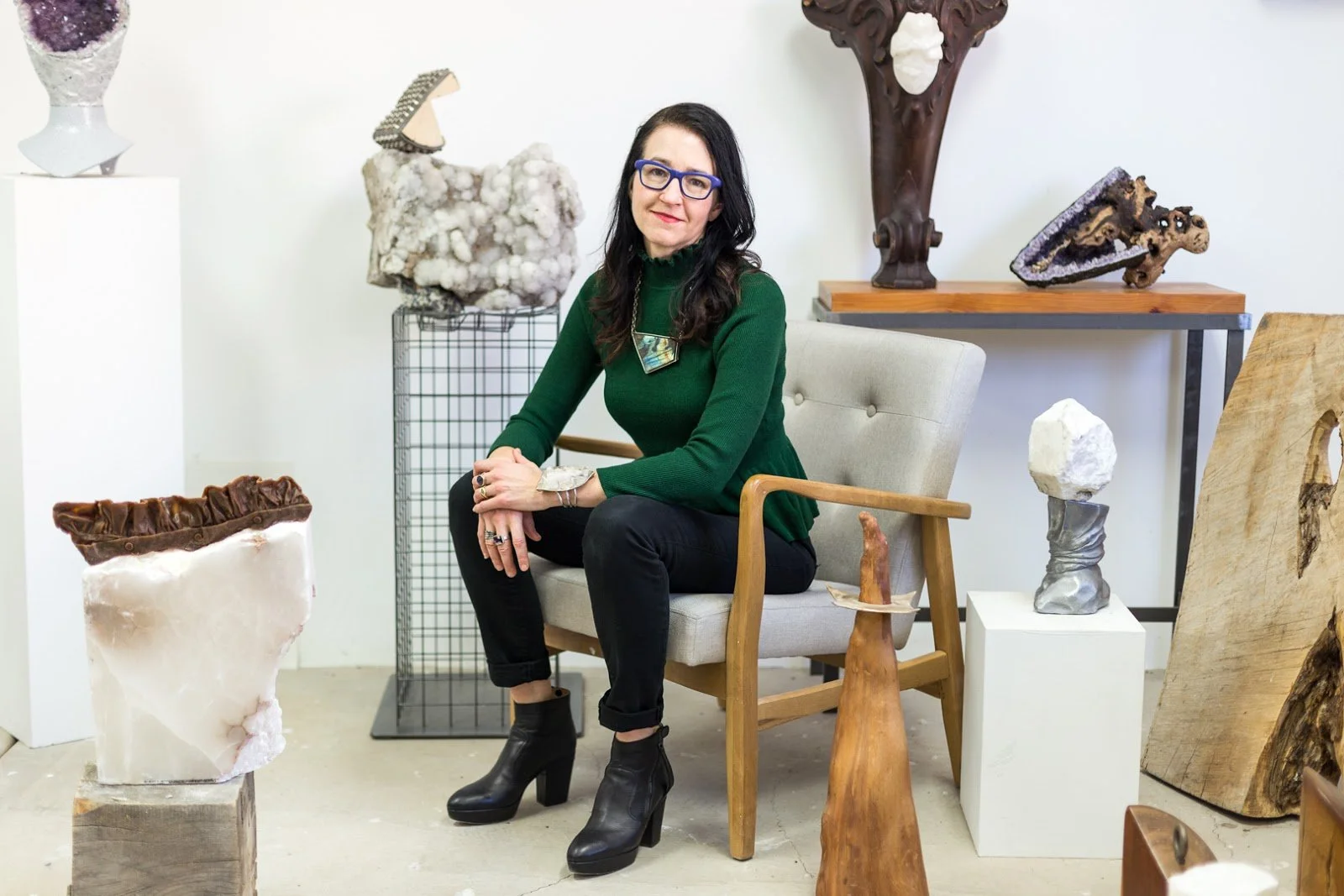Debra Baxter
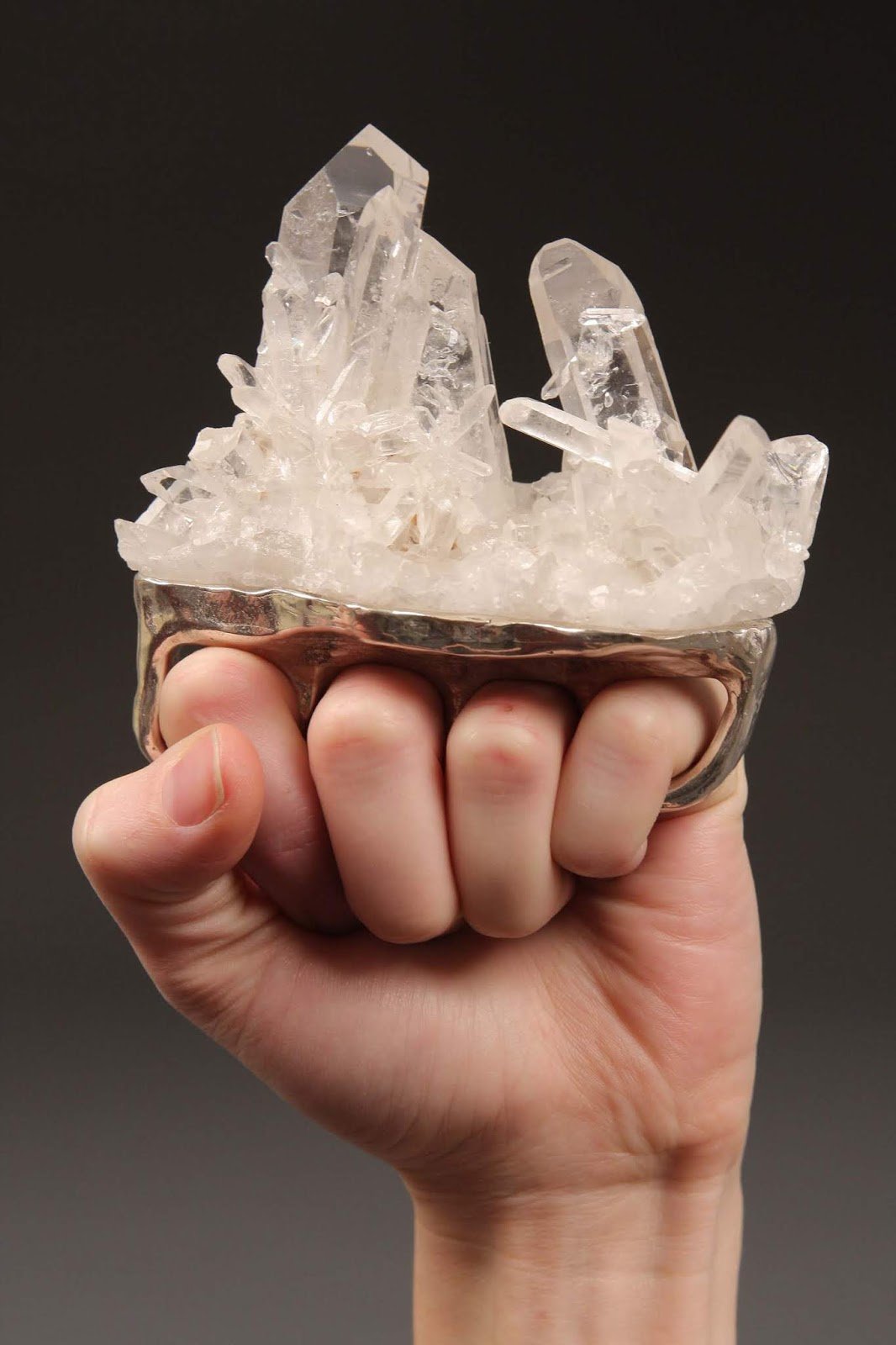
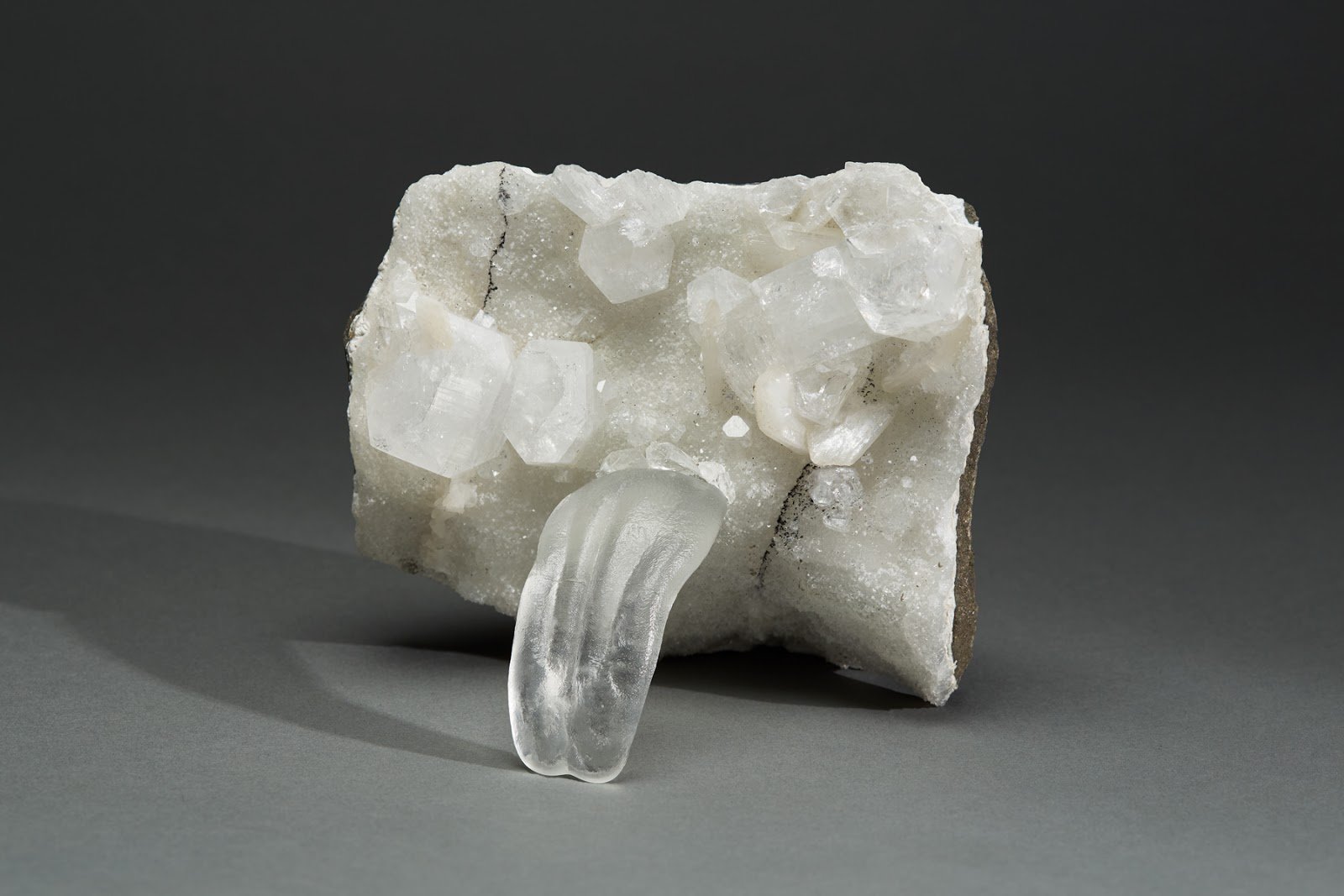

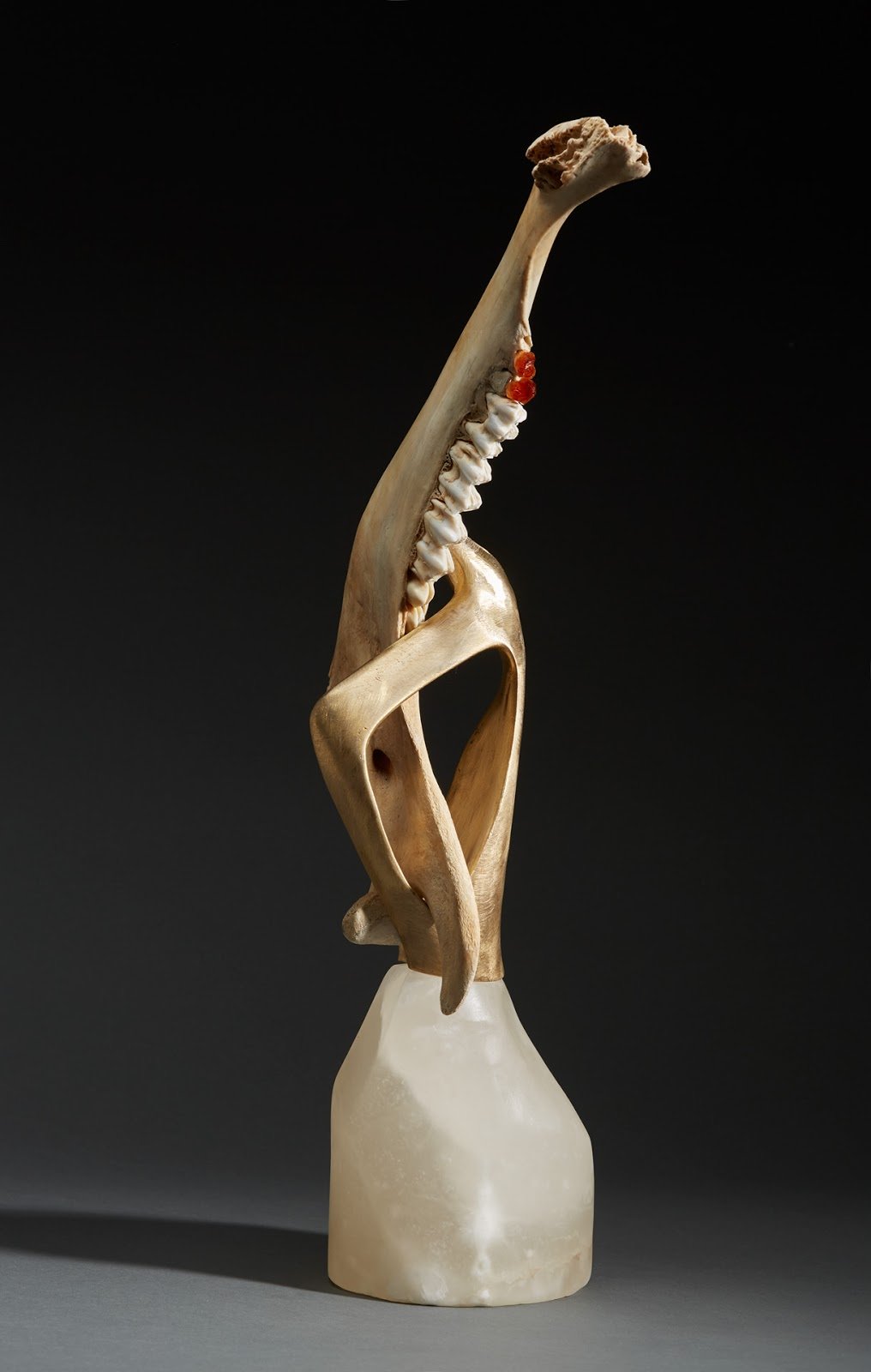
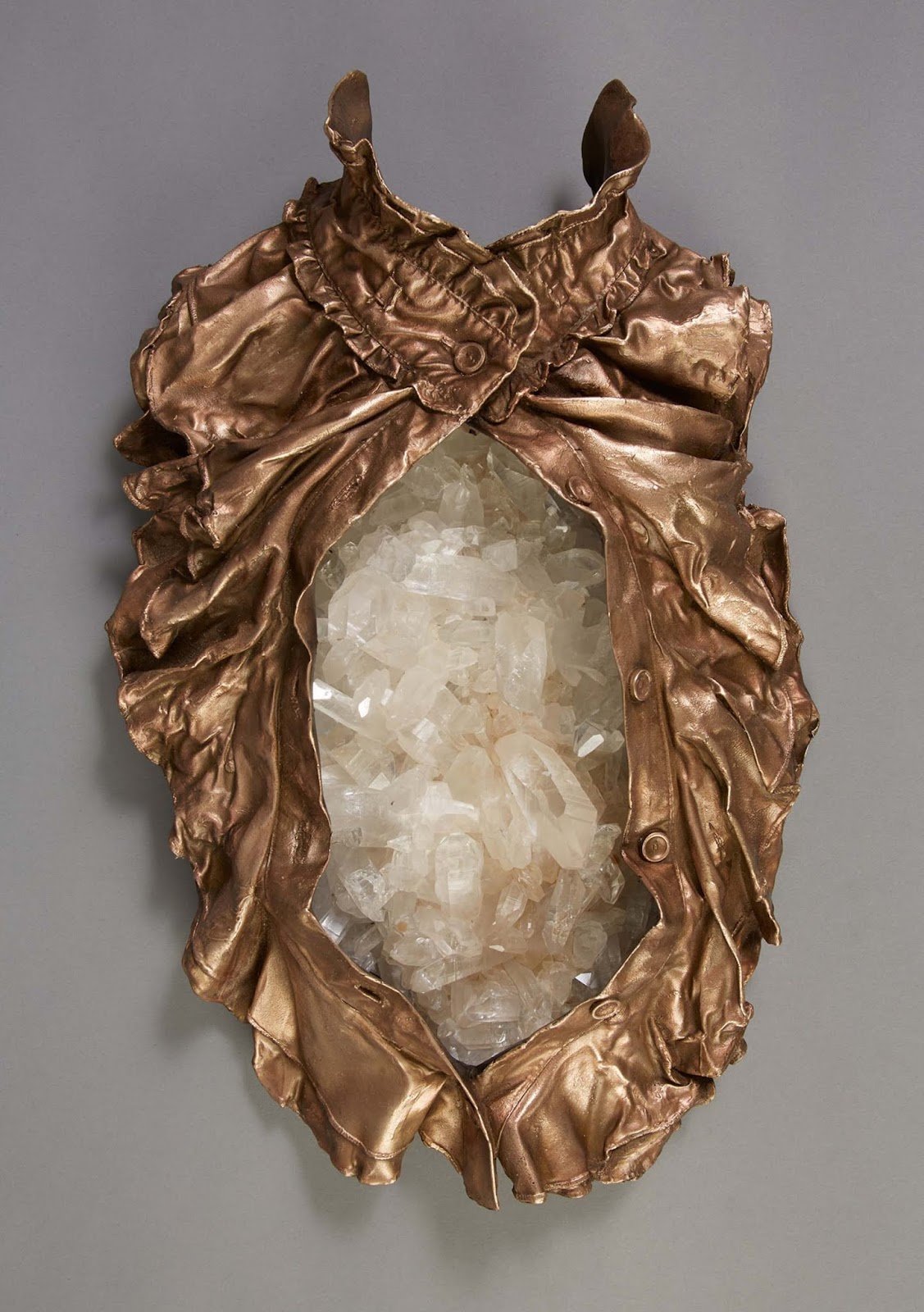
I (Lisa) had the pleasure of seeing Debra Baxter's work in person at the Ghost Heart exhibit Roq La Rue Gallery in Seattle, WA. My friends and I couldn't stop talking about her work, particularly her impressive anatomical heart sculptures featuring glistening crystals. I told Alexa we had to reach out to have her on the blog!
Debra Baxter is a sculptor and jewelry designer who combines carved alabaster with crystals, minerals, metals, and found objects, exploring notions of power, vulnerability, empowerment, success, and failure.
She received her MFA in Sculpture from Bard College in 2008 and her BFA from the Minneapolis College of Art and Design in 1996, in addition to studying at Academia di Belle Arti in Florence, Italy. Debra has received an Artist Trust Individual Artist Grant, three 4Culture Individual Project Grants in Seattle, Washington, and was recently nominated for a Louis Comfort Tiffany Biennial Award as well as a Joan Mitchell Award.
Her work has been featured in Zoo Magazine (Germany), Edelweise Magazine (Switzerland), Zink, art ltd., Design Bureau, and Sculpture, Seattle Magazine, as well as hundreds of blogs all over the world. She has shown in solo and group exhibits throughout the United States. Baxter’s wearable sculpture piece Devil Horns Crystal Brass Knuckles (Lefty) is in the permanent collection of the Smithsonian and is in the re-installation of the Renwick Gallery’s Permanent Collection.
She has created two artist’s books: Wanting is Easier than Having, and 100 Days of Sculpture, both published by Publication Studio in Portland Oregon.
We are fascinated by the juxtaposition in form and subject matter of Debra’s work. Debra has some thoughtful insights to her creations:
A feminist discourse informs the objects I make. Supporting women is one of the most important aspects of my life inside and outside the studio. I am interested in power and empowerment, in finding strength in uncomfortable moments, and in addressing the dichotomy of simultaneous success and failure. Power and vulnerability seem to be at opposite ends of a spectrum, but power cannot exist without being vulnerable.I am interested in the body in both “high” and “low” terms. For me, the lushness of the Baroque period and the gaudy extravagance of hip-hop are not far apart. I am drawn to the grand history of the figure in stone, and I find myself making an abject tongue that is strangely beautiful. My work often calls the body to action. I distinguish between anatomical study and the representation of the body as a metaphor of the self: my sculptures address the body as a vehicle of constraint and allow for its phenomenological potential. Find her work online and on Instagram
Originally published 712/2019
More on the blog:

